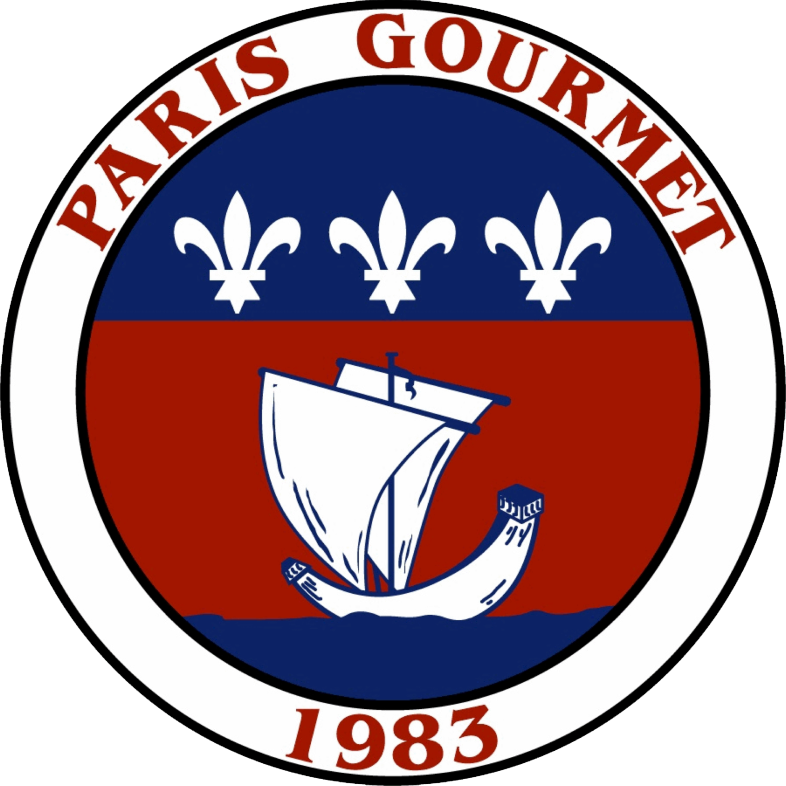Praline Tart - Lyon's Iconic Tart
- By Charlotte Brown
- January 16, 2025
THE CITY OF LYON ABOUNDS IN FAMOUS CULINARY SPECIALTIES, BUT THE PINK PRALINE IS SURELY ONE OF THE BEST KNOWN. THIS IS THE STAR INGREDIENT IN PRALINE TARTS. ALTHOUGH ITS ORIGIN IS SUBJECT TO DEBATE, ITS CELEBRITY TODAY IS INDISPUTABLE.
Text by Mégane Fleury (Featured in the January issue of Pastry1 Magazine
regional delicacies
france through its regional delicacies
In Lyon, gastronomy is sacred. Among the range of specialties, praline has become one of the most famous over the years. These pink pebbles are made from roasted almonds surrounded by sugar. “To make it, you need to roast almonds or hazelnuts, depending on what you prefer to work with," advises Pierre Bricotte of Dragées Blanc et Llopis, a confectionery company founded in the 1950s. Next, melt sugar, water and glucose. Everything is then mixed together.” The confectionery is used to garnish various pastry and bakery products, including the famous praline tart. The latter is made using a mixture of cream and pink pralines, placed on a sablé dough base.
A debate on the origins of the praline tart
To retrace the history of this dessert, we first need to understand the origins of praline. It is said to have been invented by Clément Jaluzot in the 17th century, who was the chef to Duke César de Choiseul, Count of Plessis-Praslin, in Montargis, Loiret. Upon tasting roasted almonds and caramelized sugar separately, he came up with the idea of combining these flavors. His creation was a hit, and the pralines were served at an important dinner, organized by Duke César de Choiseul.
Praline is thought to have been invented in the 17 century by Clément Jaluzot
When asked by his guests about the origin of these sweets, the Count takes credit for the discovery, claiming that he is the inventor of pralines, basing the spelling on his name. A little later, Clément Jaluzot got his revenge by opening his confectionery, where he made these small coated almonds. Years later, in 1903, it was bought by Léon Mazet, who took over the recipe for Montargis pralines. These are still manufactured by the business today. In the 20th century, praline made its mark in Lyon and the surrounding area.
According to Maison Sève, the pink version of the confection was created by a confectioner in Champagne-au-Mont-d'Or, a town near Lyon. The village has many rose gardens, and the craftsman was inspired to create a new recipe that would appeal to Lyon's wealthy silk merchants on vacation. He gives the praline a pint tint, using the insect cochenille. Next, he decides to go one step further and develop a travel cake that his customers could take back to Lyon. And so the praline tart was born: a tart filled with crushed pink pralines. Years later, Richard and Gaëlle Sève bought this pastry shop. The couple found the copper mixer used to make pralines in the cellar of the store, and still use it today. To design his praline tart, Richard Sève based his recipe on the original, awarded the city's "Made in Lyon" label in 2024.
 A world of praline in Lyon
A world of praline in Lyon
Since 2022, the praline has had its own World Cup. A competition for both professionals and apprentices is organized around this confectionery. This year, there were three categories: praline brioche, praline galette and praline tart. For the latter, Ernesto Sutter, a B.T.M. apprentice chocolatier-confectioner with Bruno Saladino in Lyon, won first prize, the praline d'or. “I wanted to revisit the textures of this specialty," says the student of Grenoble's Institut des Métiers et des Techniques. I wanted to have something creamy and melting, while keeping the crunchiness on top." To achieve this, he explains that he used homemade pralines, composed of half almonds and half sugar. "For this recipe, I think you have to really pay attention to the sugar, because there's already the sablé dough, to which we've just added a sweet filling, so you have to be careful to maintain the balance." For Pierre Bricotte, the quality of pralines is essential for this type of recipe. "You need high quality nuts and sugars. We use almonds from California, which are slightly sweet. For a tart, I recommend 30% almond praline. It has a light vanilla taste and crunch without being hard."
When it comes to preparing the tart, Ernesto Sutter recommends being cautious when baking the base: "If you want to put the tart back in the oven once you've added the filling, make sure the base isn’t completely cooked; on the other hand, if you're only going to bake it once, it should be well done." For the filling, you must be careful not to let the mixture stick, as this may alter the taste. “There is no universal technique," explains Ernesto Sutter. It also depends on individual taste.” While the praline tart remains an iconic dessert, this type of test shows that it can always be reinvented, without losing its essence.
Sources: Chocolaterie Sève; On va déguster la France, published by Marabout and France Inter; https://www.leparisien.fr/sports/la-praline-une-histoire-de-pa- ternite-10-07-2010-995834.php
